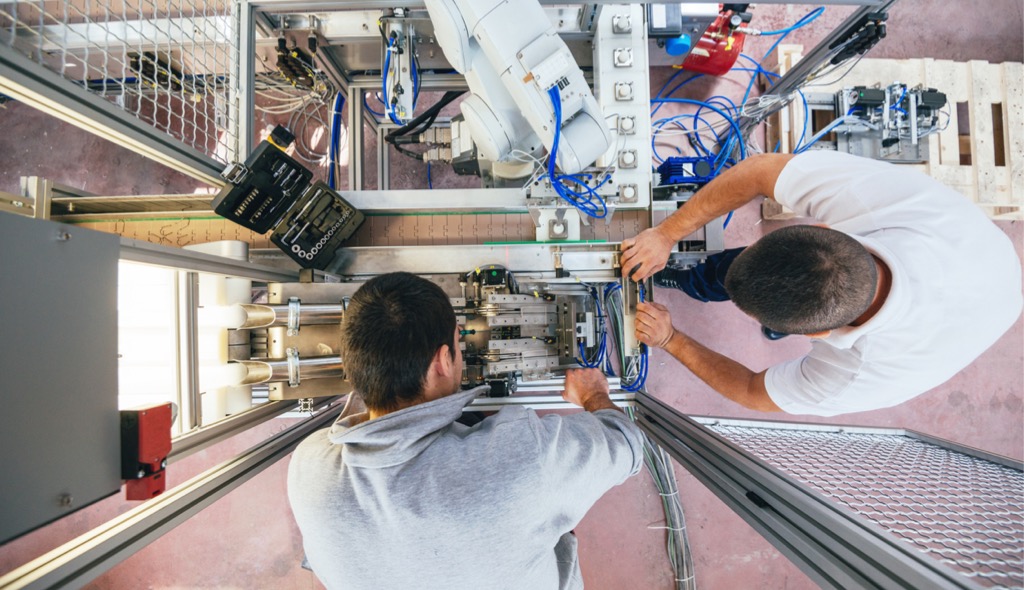
What’s your plan for increasing output? More yield and capacity are possible, if you’re ready to shine a light on outdated approaches and work on tapping into hidden operational reserves.
Are poor forecasting, production inefficiencies, and machine downtime making continuous improvement difficult to achieve? Follow these three insights to create output strategies that will positively impact your people, processes, and bottom line.
Meet the Experts
Adam Kilgore is Maintenance and Reliability Leader at Hill’s Pet Nutrition, a subsidiary of Colgate-Palmolive, and has amassed more than 20 years of experience in manufacturing.
Ed Ballina is the founder of OpEx Consulting, a former VP of Manufacturing and Warehousing at PepsiCo, and a 40-year veteran of the manufacturing industry.
Adam and Ed spoke with Augury’s Chris Dobbrow about how they have succeeded in reducing inefficiencies on and off the plant floor and how manufacturers can start getting recognizable value from AI and IoT technologies.
#1: Know your problem before trying to solve your problem
Manufacturing can be a slow-moving industry, and it’s struggling to adapt to a tech-focused world that changes quickly. How can industrial organizations overcome this stagnation?
Technology is useless if it’s not directed at a specific problem–your specific problem. It can be tempting to get distracted by the latest shiny object, and many manufacturers have gotten burned by that approach. The only way to overcome your challenges is to know them well, from every vantage point.
“We need to focus the resources that we have–and they’re finite by the way–on the top three things instead of the top 20 things.” – Ed Ballina
That means doing the work: Map your processes, perform criticality assessments, and understand what’s holding you back. When you start with solving a specific problem, you’re much more likely to find the technology that can help you. And once you have that, think big, demonstrate value every step of the way, and give people a stake in the game.
“Don’t be nearsighted,” Adam emphasized. “Look at the long-term vision–you’re building a culture. You’re transforming your processes from a run-to-failure mode to a condition-based maintenance system.”
“Personally, I’m an unabashed early adopter,” admitted Ed. But when it comes to his business, that changes. Keep your challenge front and center, he argues, and don’t be distracted by the shiny object. “I don’t need to know how the magic in the black box works. I need actionable insights I can do something about.”
#2: Make employees the key to better output
Adam teed it up perfectly: “Put people first.” With so much attention on AI and IoT these days (and forever more), it can be tempting to make tech investment the primary focus as you look to maximize your output. But it’s vital to bring people into that technology adoption process as early as possible. Doing so will give individuals and teams more stake in the game, motivate them to gain new skills, and increase trust across the board.
Expanding on that point, Ed called for manufacturers to rethink their reward systems. Historically, maintenance workers who could walk into a plant and, tools in hand, fix a failed machine were heroes on the plant floor. Today the heroes are those who can use incoming data to see problems before they happen, saving time, money, and effort before tools even enter the picture. The physical tools will always be important, but plant workers need to add predictive insights to their toolboxes.
As Adam put it, “Trust in God. All others must bring data.”
#3: Look everywhere, evaluate everything
Getting control over processes can feel like herding cats. With overlapping and interdependent inputs happening on multiple production fronts, how can manufacturers cut through the complexity and make meaningful progress?
“Get out on the shop floor,” Adam advised. Meetings and board rooms and computer screens are not enough, because the shop floor is where money is made, value is added, and problems can be clearly seen.
Bridging those divergent perspectives is paramount. If corporate leaders have an overly rosy view of operations, but plant floor teams are struggling, that’s a recipe for disaster, according to Ed. “We are still in crisis manufacturing,” he said, an environment exacerbated by COVID, when what the industry needs is precision manufacturing. Getting product out the door is your primary goal, but it can’t be the only goal. When it is, you miss opportunities for making small changes that result in big, across-the-board benefits.
Adam stressed that a process is only as complex as you make it, and revisiting and evaluating the inputs and outputs is essential. “The best thing you can do is get rid of the waste and get rid of your variability within your processes. You’ll see better output and less complexity when you go through those exercises.”
Ready to Flip Your Factory?
Our five-part series explores defeating downtime, optimizing assets, improving processes, reducing waste, and transforming work. Watch each webisode, download the bonus content, and become a Production Health Pro.



